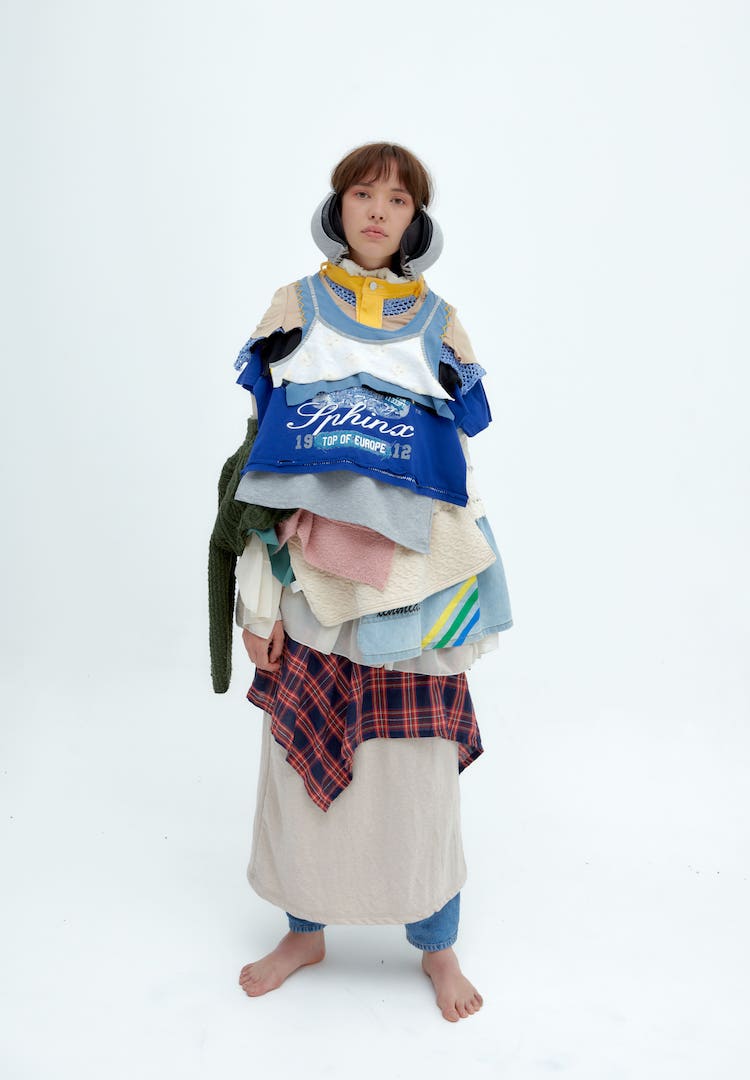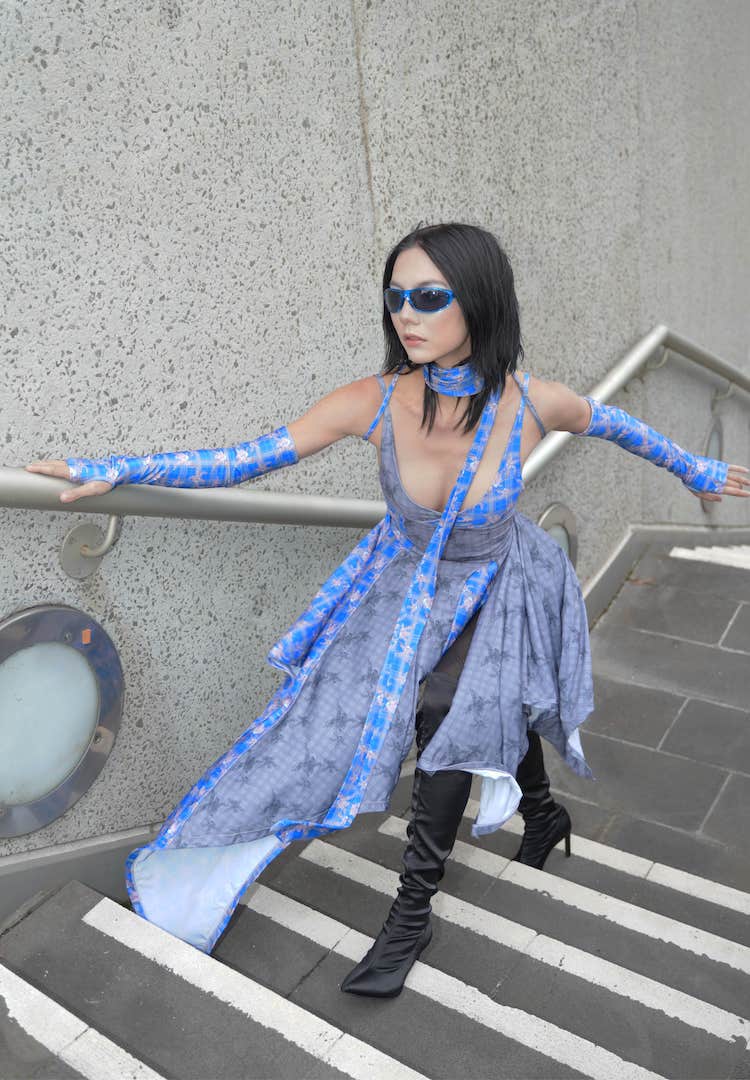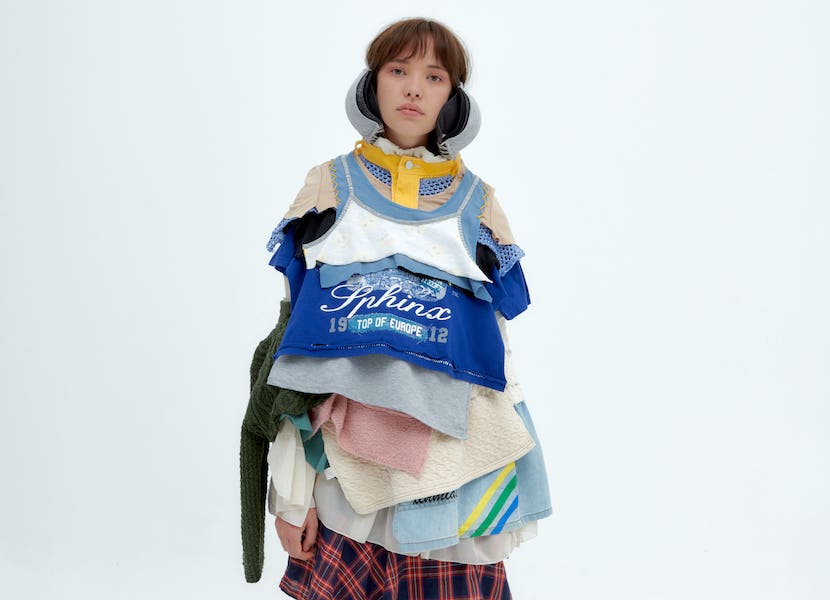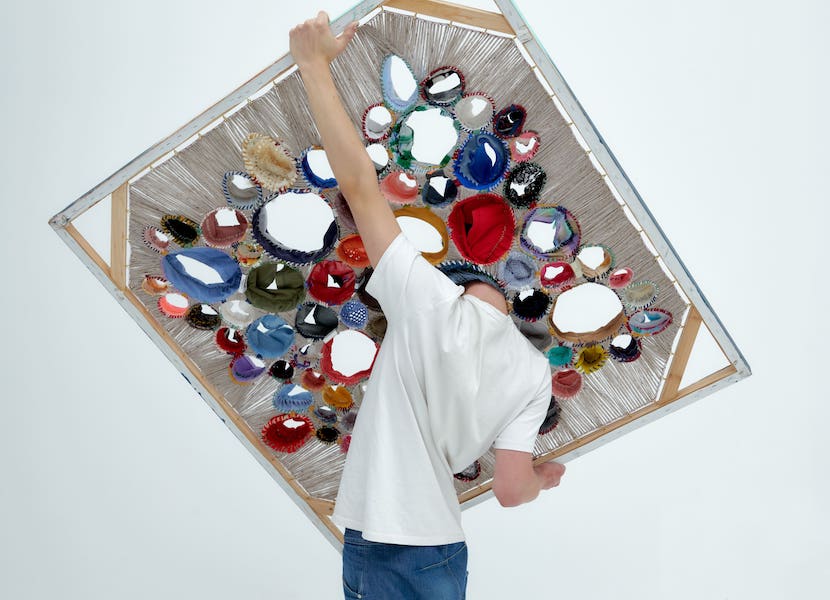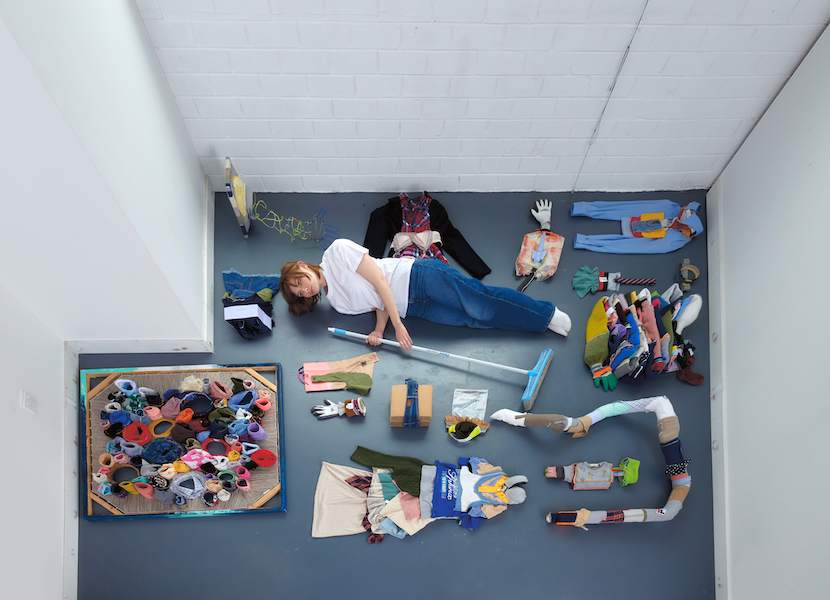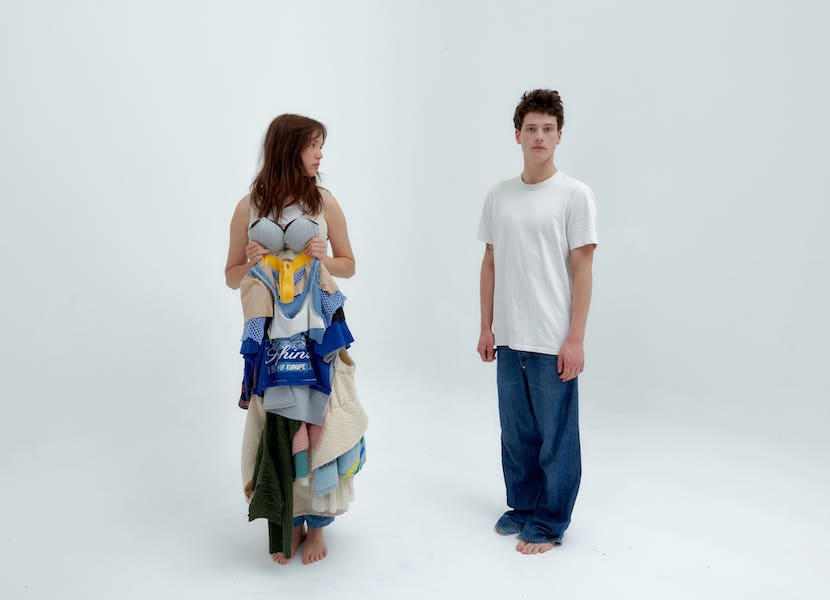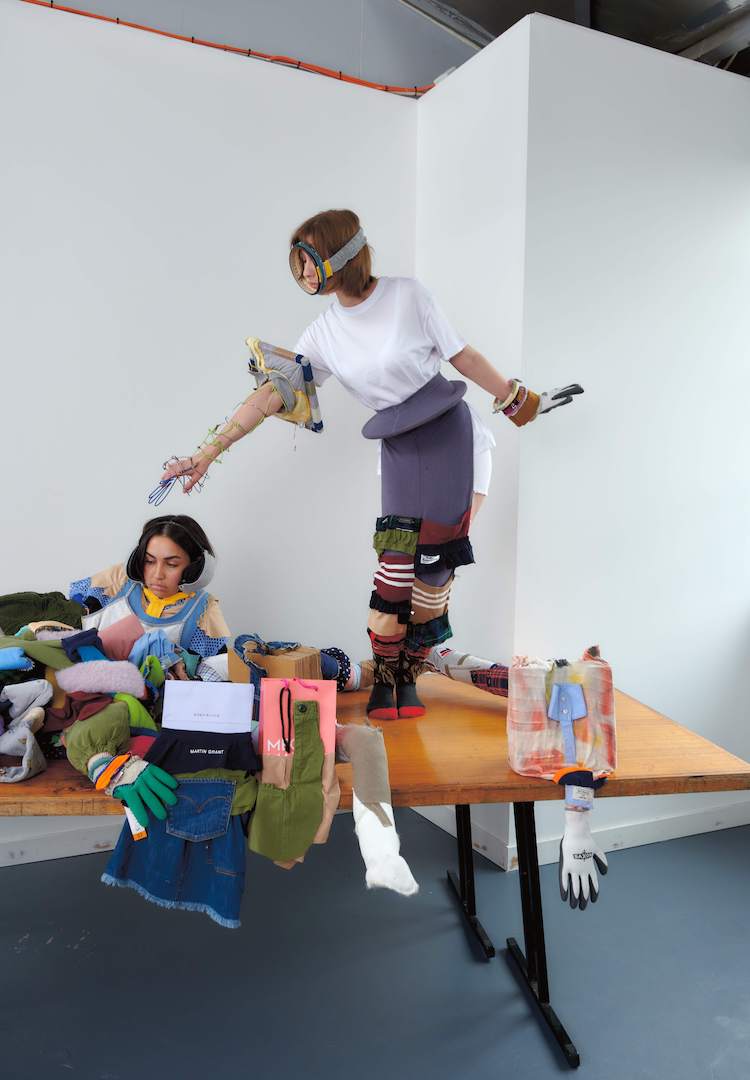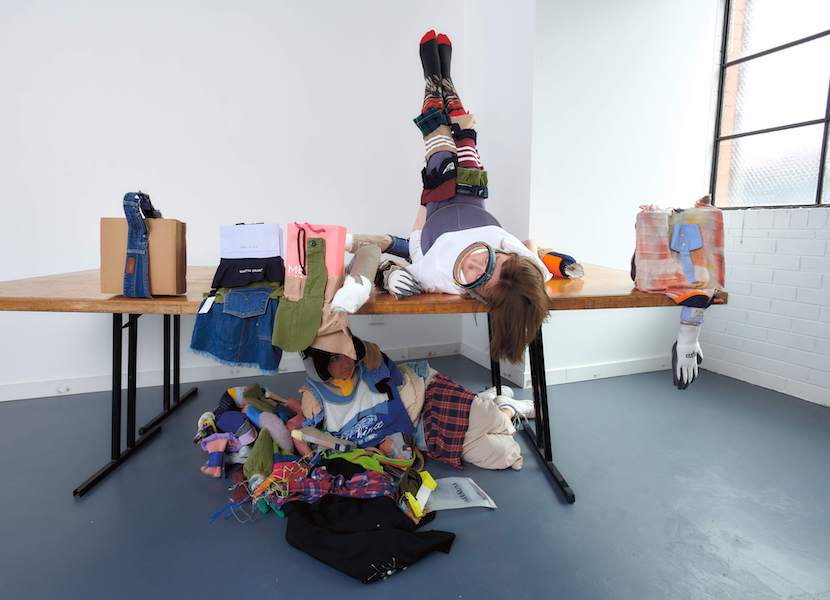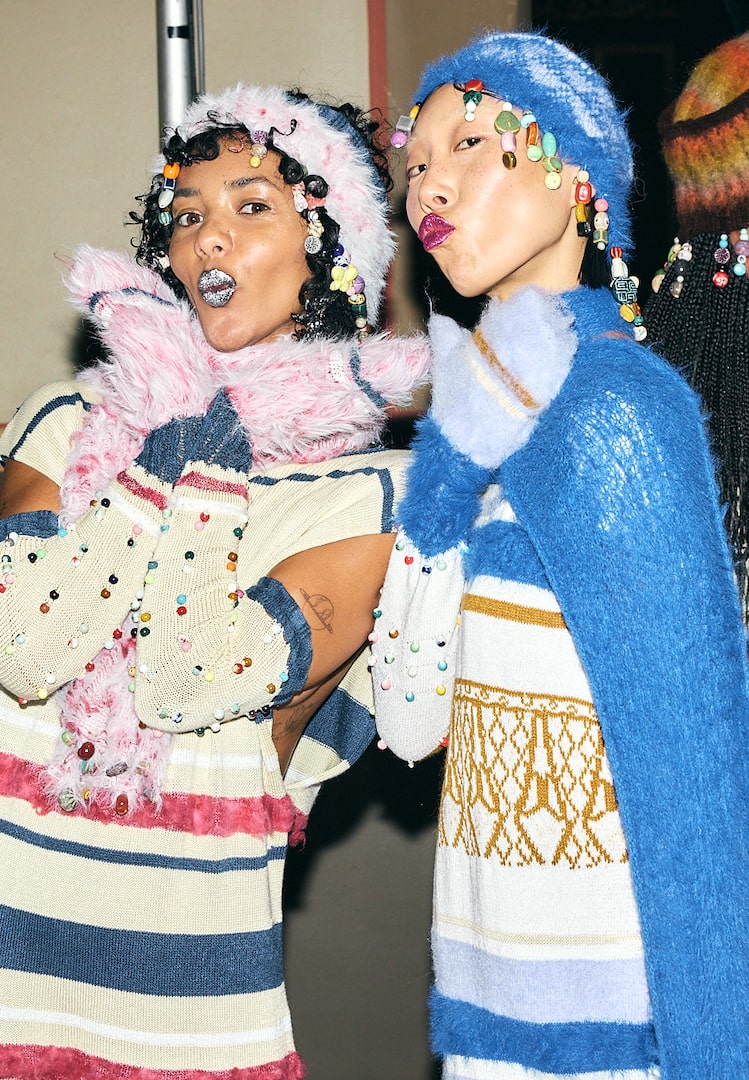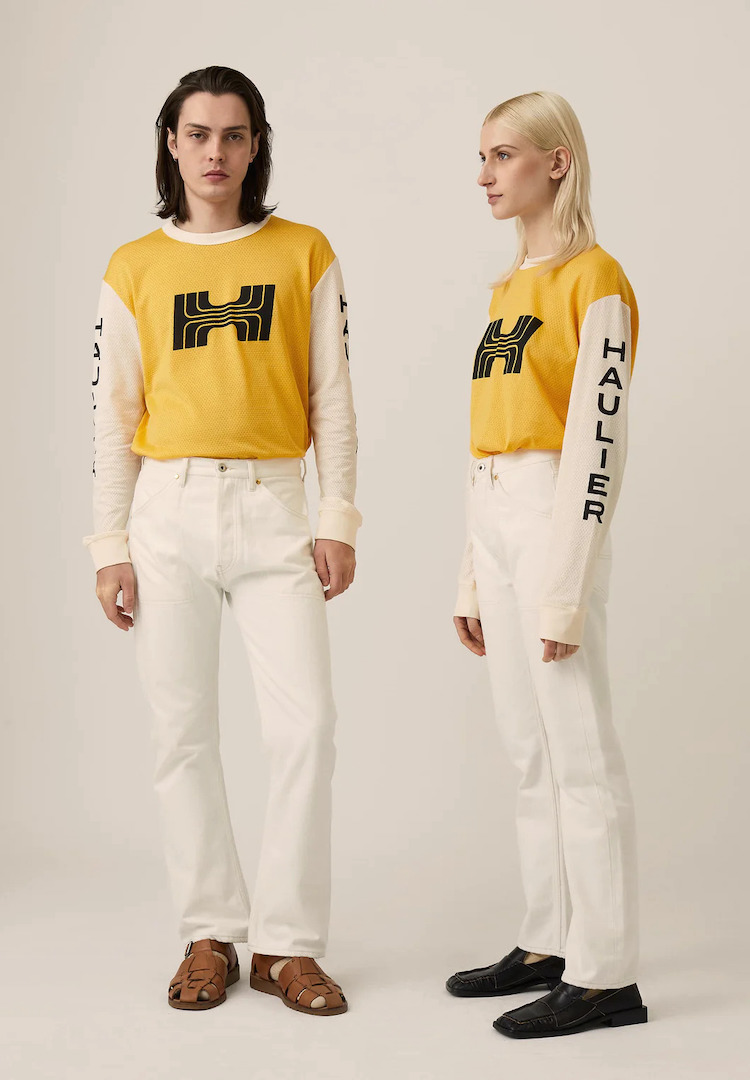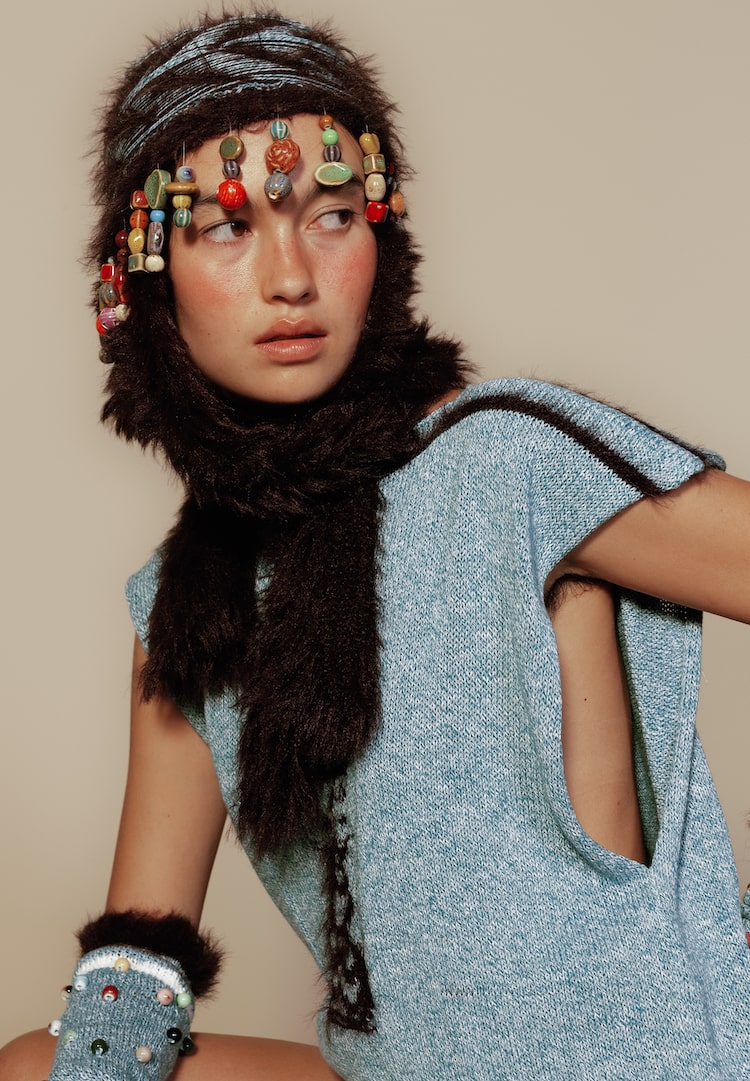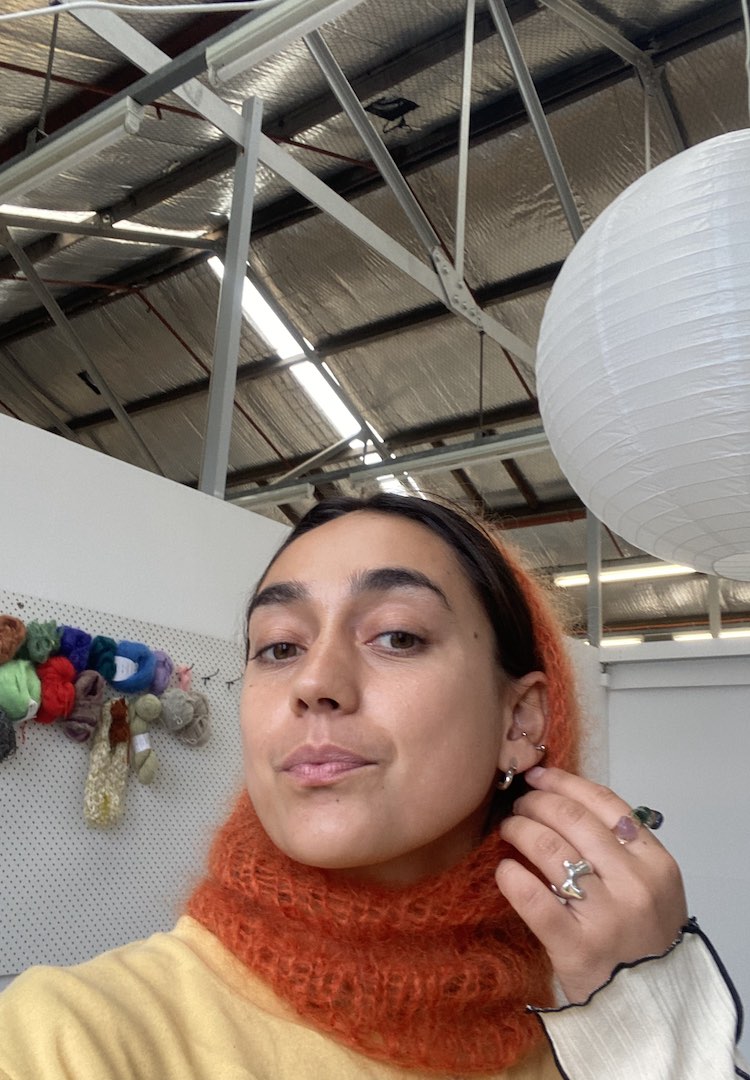Graduate designer Carol Yang is bringing “artistic madness” to Australian fashion
PHOTOGRAPHY BY TED MIN
The creative mind our industry deserves.
Despite finishing her Master of Fashion Design last year with a notably striking graduate collection, Carol (Jialu) Yang still isn’t sure if she wants to pursue fashion design. She says that every time she’d spend the night studying for an upcoming assessment, she’d question why she even chose it in the first place.
Carol wouldn’t exactly call herself a fashion designer, either. Instead, she explains that she sits somewhere between ‘fashion designer’ and ‘artist’.
For more fashion news, shoots, articles and features, head to our Fashion section.
It’s a fair call when you look at her work. Her process eschews traditional design elements to instead create garments that can exist separately from the body as “activity sculptures”.
Her process is a little different too. Where most designers will create illustrations of how they envision their garments to look, Carol instead completes her drawings at the end. It’s part of her creative process and as she notes, more importantly, an acceptable excuse to rationalise her tendency to procrastinate.
It’s this theme of procrastination that she chose to explore for her final graduate collection, as a means of understanding (and hopefully overcoming) her own behaviours. Whether it worked or not is hard to say, but the end result is a graduate collection quite like no other we’ve seen for a while here at Fashion Journal. It’s this collection that has earned Carol a spot among the top 10 designers at the 2022 National Graduate Showcase at PayPal Melbourne Fashion Festival.
Fashion Journal is excited to once again be a supporting partner of the showcase, this year presented by Samsung Galaxy, to celebrate Australia’s top-ranked emerging talent in fashion. The event will see a select number of leading fashion graduates from all over the country exhibit their visionary collections in a digital presentation, showcasing cutting-edge design and innovation.
Over the next few weeks, we’ll be profiling each designer through a series of interviews, beginning with Carol.
Hi Carol! Please introduce yourself to our readers.
I am Carol (Jialu) Yang, a recent graduate of the Master of Fashion (Design) at RMIT. I finished my Honours degree in 2019 and designed a fashion collection, Made in China and Designed in China, to redefine the meaning of Chinese fashion.
Last year was a new start for me, moving focusing from traditional fashion collections to a more contemporary fashion project. Each of my collections starts by exploring my own strange perspective on fashion, and presenting it in an unconventional way.
I prefer to leave the design itself some unknown space, rather than planning each step, so my final illustration is always finished after the design is fully completed. And of course, it’s also a nice excuse for my procrastinating.
View this post on Instagram
Ah yes, procrastination! It’s a key element of your graduate collection. Can you tell us a little more about it?
The project is named Are you procrastinating? and made up of six series: ‘Hard to Move’, ‘Stiff Body’, ‘Results for Last Minutes’, ‘Replaceable Arm’, ‘Pomodoro Technique Assistant’ and ‘Welcome to Procrastinators’ World’.
Procrastination is a complex psychological activity. Everyone’s procrastination is different and has diverse reasons and feelings behind it. This project takes the procrastinator themself as the protagonist, and aims to demonstrate their variety of mental activities in a visualised form.
Based on the fashion industry’s procrastination of dealing with fashion waste, it’s become a major material in the project. As a result, there are unexpected objects used throughout my work.
My designs retain their core function of being worn on the body, while also being able to exist independently as an ‘activity sculpture’. The aim is to express and amplify the feelings of procrastination in a humorous way, but at the same time, bring the objects within this definition of auxiliary workability for wearers.
View this post on Instagram
What were the major points of inspiration for your graduate collection?
Over the past two years – while we’re all slightly or severely impacted by Covid-19 – procrastination is a prevalent phenomenon in the general population. In fact, it has been latently affecting the life of adults as well as college students for a long period.
According to research data, the large majority of university students exhibit procrastination behaviour. That is such a huge number of students and to be honest, I am also one of those people contributing to the data.
This tendency to procrastinate has been bothering me since my Honours year. I’ve tried to find out the reasons why I do it, to save myself academically. That’s why I decided to explore this topic.
Tell us about the experience of putting together your graduate collection.
At the beginning of my Masters year, we started with an activity called “My Wardrobe” where we had to identify specific characteristics from our clothes. I found that I have a lot of unused clothes, left for many years even, that I don’t wear anymore. How to deal with these clothes and whether they can be used again is the starting point of my design work.
I would like to thank my neighbours for donating their unwanted garments to me during a time when all secondhand stores were closed due to Covid-19. This resulted in my living room piling up into a clothes recycling bin and irritating my mum for a whole year.
View this post on Instagram
Did you procrastinate in creating this collection?
When I tried to connect the themes of fashion and procrastination, I was at a loss, not being able to find any connection. After that, I explored using procrastination in my design process.
For example, I created a ‘time system’ game for 10 minutes, using a cross shape to create a grid of four separate areas and filling each with clothes. The game starts from the upper left corner, and requires me to ‘complete’ the four grids in a counterclockwise direction.
The completed times for each square are recorded, documenting the process of my design work. I often finished the fourth grid after the time limit, despite knowing I only have 10 minutes. The experiment also shows a procrastinator’s work across different periods, from the first neat and regular grid to the last messy grid.
View this post on Instagram
Other than our collective procrastination in addressing fashion’s waste problem, what about the Australian fashion industry needs to change?
Compared with other countries, Australia seems to lack artistic madness. Most of Australian design follows the aesthetics of the sales market – simple and classic, it would never go wrong. It seems to be the style of most high-end luxury brands. But we still need some bolder designers to disturb this calm lake.
What’s next for you?
This is a question I’ve been asking myself every day since graduation.
This year is a new challenge for me because my designs eschew the traditional fashion design process. It also puts me in an ambiguous position. Am I a fashion designer? Or an artist? Or a character in between? I need to understand who am I first.
At this moment, I’ll still focus on collaboration, working with other creators from different fields. Then, I will look for the most suitable position for me. Or maybe I’ll just act like a normal graduate student to find a job first, who knows.
Some of Carol’s responses have been edited for clarity. To view more of the designer’s work, head here.


